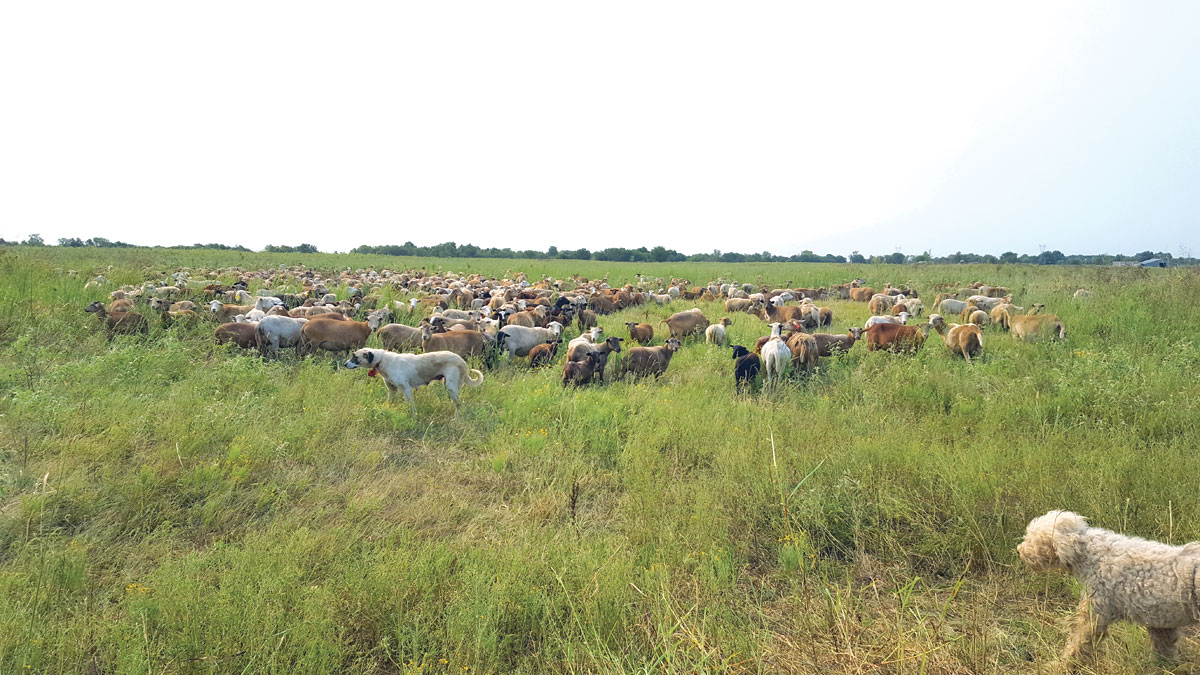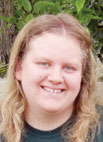
Hopping Land and Livestock Co., finds managed grazing a good fit for their large sheep operation
If you were to take a drive near Porter, Okla., “The Peach Capital of the World,” you just might spy something a bit out of the Oklahoma ordinary grazing in the fields outside of town.
Sheep, 500 sheep to be exact, owned and cared for by the brothers Joe and Hoss Hopping, co-owners or Hopping Land and Livestock Co., call the pastures home.
However, the sheep are not the usually thought of wooly sheep people think of, these are hair sheep, bred not for their wooly backs but for their meat.
“The meat tastes a lot like a good steak.” Joe Hopping, the younger of the two brothers said. Contrary to their wool-clad relatives, the hair sheep have a less “greasy” or lanolin tasting meat, making them better for slaughter and consumption.
The flock of light brown and tan animals, with the occasional dark patchy coat thrown in, might easily be confused as goats to someone just passing by on the road. The herd of hair sheep have been a part of the Hopping operation for 18 years and it’s a part that they have down to a fine science.
Working hard to breed their flock for parasite resistance and livability, with a consistently superior bloodline containing half Katahdin, a quarter Dorper and a quarter Florida Native. No outside influences are ever introduced, and all replacement ewes and rams for the flock, come from the flock. All replacement animals are carefully selected.
Long time advocates of Tom Lasater, one of the founders of the Beefmaster breed and a succesful cattleman in Texas, Philosophy of Cattle Raising, the brothers apply the same philosophy to their sheep business.
The closed flock regularly undergoes stringent culling, where non-productive animals, ewes 8 to 10 years old that can no longer produce lambs and ewes that fail to produce and raise a lamb successfully are removed, along with any animals requiring extra care, no exceptions.
With the help of MIG (Management Intensive Grazing) they keep the fields lush with Bermudagrass, fescue and whatever native grasses volunteer themselves into the mix.
The brothers keep the browsing sheep fat and happy, rotating them in 10 to 20 acres pastures, sectioned off by electric wires to make them easily changeable over the nearly 750 acres of land that the flock calls home, alongside the herd of approximately 150 head of stocker cattle owned by the brothers.
The rotation of pasture land allows the sheep to better follow their natural instinct to travel and find new forage, as well as keeping down on the parasites they would be able to ingest if they were more stagnant in their forage range. Another major benefit of the MIG is that it allows the brothers to successfully care for the sheep with less hands-on effort, which also means less stress to the animals as well as reducing the amount of supplemental feed and hay required by the animals.
“We only feed hay if the winter is bad, lots of snow or ice, otherwise they do fine without.” Joe explained. “When we do give hay, the dogs are happy to see it, They curl up in it and go right to sleep. The sheep would rather have the weeds.”
The dogs he referred to were, of course, the guardians of the herd, seven of them, made up of Komondors and Anatolian Shepherds. The dogs live and breed in the pasture with their sheep companions, making sure the sheep are never alone to fall prey to the many coyotes or occasional stray dogs that also call the area home.
In the rare instances when the sheep do need a feed supplement, they’re given a mixture of soy hull pellets and corn gluten. When the sheep need to be gathered, moved or for occasional maintenance, the job is handled by different types of dogs, a combination of Border Collie and Kelpie herding dogs, are used to round up the sheep and assist in penning them.
The productive, once a year lamb crop yields an average of one lamb from a first-time mother and two from a mature ewe, not to mention the occasional set of triplets, so the baby boom significantly raises the head count of the flock. However, a set of triplets can be more of a nuisance than the blessing it might be perceived. The weaker of the the lambs is most often pushed away by the stronger two and resorts to stealing milk from a more immature, first-time ewe that doesn’t know enough to deny its advances and therefore lets it steal nourishment from her, and so it becomes a detriment to her own lamb.
With a 35-day lambing period, beginning in early May, the lambs are taken right off their mothers and are ready for sale in time for the holiday season, in the fall or early winter, when the majority of lamb meat is consumed in America and the cycle of nature starts all over again.






